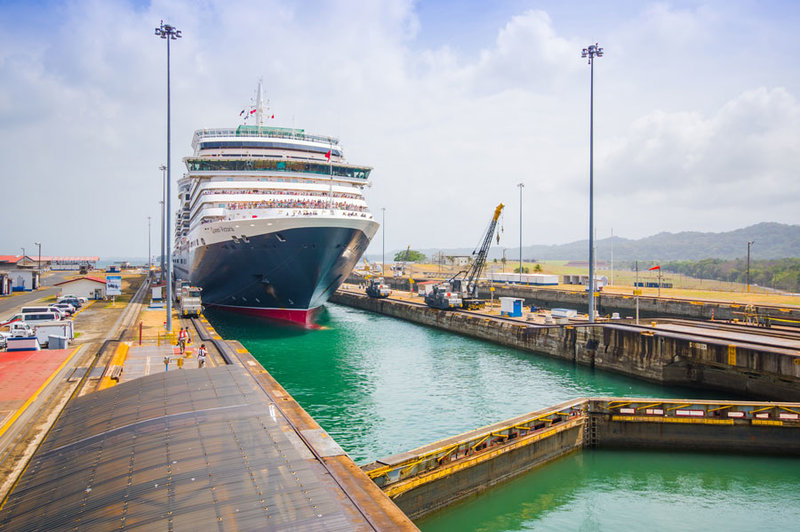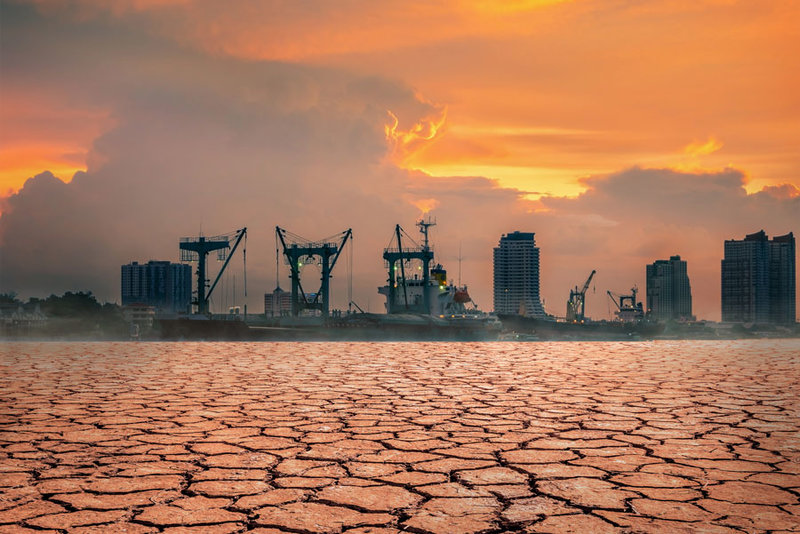Environment
Panama: the environmental legacy of the world’s key canal
The Panama Canal recently unveiled a new carbon calculator to centralise emissions data and incentivise the industry to reduce its carbon footprint. Patrick Kingsland finds out more from Alexis Rodriguez, environmental specialist at the Panama Canal Authority
Some call it
the “big ditch”, others one of mankind’s “greatest ever feats of engineering”. Either way, when it opened on 15 August 1914, the 80km waterway known as the Panama Canal quickly changed the face of the international economy, providing a bridge that united trade between the Atlantic and Pacific oceans for the first time.
Today, more than 100 years later, it remains just as important. Every day, between 35 to 40 ships pass through the canal, making it one of the busiest waterways in the maritime world and critical to the economy of Panama.
But it also faces at least one major challenge: climate change. As the world warms, extreme weather conditions are leading to periods of flood and drought that threaten the very water supply the canal requires to function.
Locks closing at the Panama Canal
How climate change threatens the Panama Canal
The 2016 El Niño weather system offered a glimpse into the disruption that may come. After a drought in the canal’s watershed, the Panama Canal Authority (ACP) was forced to issue temporary depth restrictions, which affected approximately 20% of the vessels transiting through.
“We depend directly on the environment and weather systems,” says Alexis Rodriguez, environmental specialist at the ACP. “At this stage we realise just how big an effort we have to put in.”
The trouble in 2016 came at an important time for the ACP: the opening of a third lock to cater for larger ships in a much greater quantity. The $5.25bn extension, which has since doubled the canal’s capacity, was first proposed by former Panamanian President Martín Torrijos in 2006.
The canal’s wider lane means vessels can transit through with more cargo
Conscious of climate change, however, the extension created a dilemma for the ACP, according to Rodriguez. “We were talking about raising the capacity of the canal with bigger vessels but at the same time wanting to lower emissions,” he says. “Achieving both was complicated.”
But a year into operations, Rodriguez says the expanded canal has actually helped cut emissions. As well as offering the existing shortcut, the canal’s wider lane means vessels can transit through with more cargo, meaning fewer overall movements and fewer CO2 emissions.
“With the expanded canal, we saw an opportunity for bigger vessels to use the shorter route and thereby reduce emissions,” Rodriguez explains. “It is a good example of how different measures taken by sectors or industries, like ports and canals, can encourage customers and give them opportunities to improve their commitments to the environment.”

The Queen Victoria navigating the Panama Canal. Image courtesy of Fotos593 / Shutterstock.com
Svein Kleven is senior vice president of engineering and technology for Rolls-Royce. Image courtesy of Rolls-Royce
Calculating emissions: how does the canal compare with other routes?
Another key initiative recently introduced by the ACP is an Emissions Calculator, which provides shippers with a tool to assess their carbon emissions when transiting through the canal, as well as other routes. The tool uses data including the origin and destination of the ship and the volume of the cargo, to pick the route that has the lowest level of emissions.
“The idea is to give our customers information about how much CO2 they would emit using the Panama Canal compared to other routes,” says Rodriguez. “What, for example, is the difference between a vessel using the Panama Canal from Asia to the East Coast, instead of using, say, the Cape of Good Hope, or other routes by train or truck.”
The IMO is currently working on a global emissions strategy
The scheme is voluntary but Rodriguez says it has been well received by the shipping industry. “We have had good feedback from our big customers,” he says. “Companies want to be involved in these issues, they want their cargo to have less emissions and this information will help them achieve that.”
While a unified approach to environmental sustainability does not yet exist in the shipping industry, the International Maritime Organization (IMO) is currently working on a global emissions strategy, and Rodriguez hopes that data from the Emissions Calculator scheme will help influence the content of that agreement.
“In a few years, when they make a final decision at the IMO, this is something that they will take into account,” he says.

Cargo transport via ships blocked by lack of water. Image courtesy of
Can the Panama Canal become 100% carbon neutral?
The Emissions Calculator is just one of a number of programmes the ACP has introduced in the past few years. In November 2016, the canal announced a new Environmental Premium Ranking Initiative – part of its wider Green Connection Environmental Recognition Program – that rewards customers that meet high environmental efficiency standards.
“With the addition of the Environmental Premium Ranking to our Recognition Program, we’re rewarding those who make conscious efforts to reduce greenhouse gas emissions and invest in technology that will make shipping even more efficient,” said Panama Canal CEO Jorge L. Quijano at the time.
Put together, the ACP hopes its new schemes will help the canal move closer to its ultimate goal: becoming a fully ‘carbon neutral’ entity.
“It's complicated but we can do it,” says Rodriguez. “We aren’t just talking about being carbon neutral on paper. We are changing our operations and systems to become more efficient.”
We’re rewarding those who make conscious efforts to reduce greenhouse gas emissions
“With the addition of the Environmental Premium Ranking to our Recognition Program, we’re rewarding those who make conscious efforts to reduce greenhouse gas emissions and invest in technology that will make shipping even more efficient,” said Panama Canal CEO Jorge L. Quijano at the time.
Put together, the ACP hopes its new schemes will help the canal move closer to its ultimate goal: becoming a fully ‘carbon neutral’ entity.
“It's complicated but we can do it,” says Rodriguez. “We aren’t just talking about being carbon neutral on paper. We are changing our operations and systems to become more efficient.”